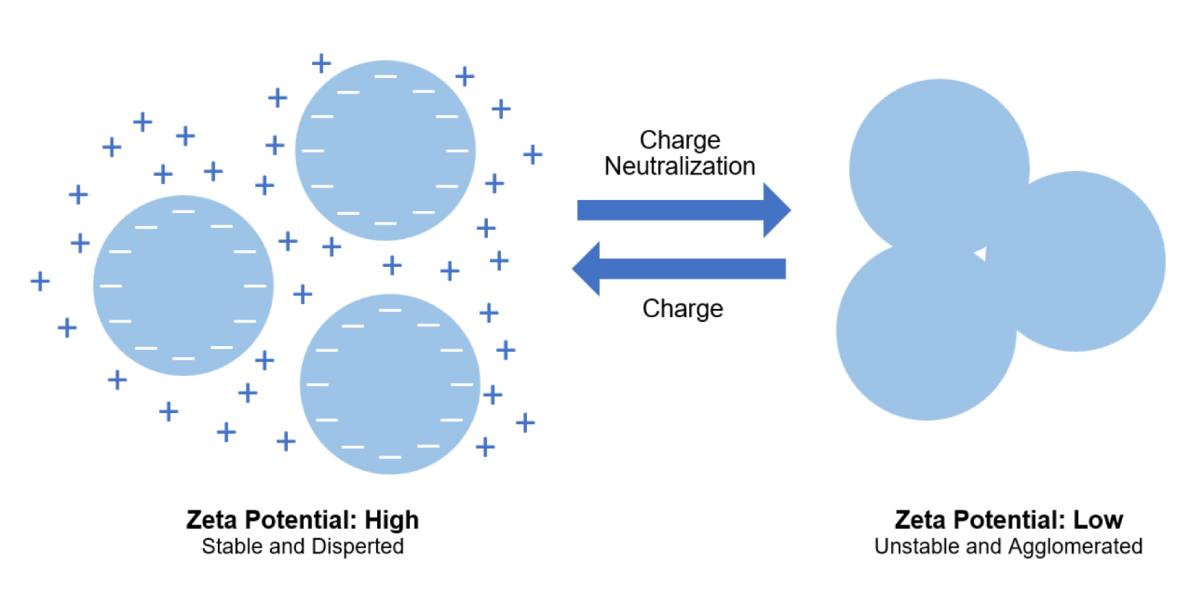
Nanobubbles, with their unique properties and vast potential across various fields, have captured significant interest. Alongside this interest comes the need to characterize the bubble size, concentration, and stability. By utilizing HORIBA’s Nanoparticle Tracking Analysis (NTA) and Zeta-potential Analysis techniques, researchers can access groundbreaking solutions to unravel the secrets of nanobubbles.
Nanobubbles, also referred to as ultrafine bubbles, are tiny gas-filled bubbles with diameters less than 1 μm. They are categorized under the broader term “fine bubbles” which includes microbubbles greater than 1 μm but smaller than 100 μm in diameter.
Nanobubbles appear transparent and remain suspended in liquid for several weeks to months due to their minuscule size, high surface area to volume ratio and unique surface properties. For this reason, they have many useful applications across industries including cleaning, sterilization, aquaculture, agriculture, therapeutics and more.
The effect and stability of these bubbles varies depending on a number of factors: size, size distribution, concentration, the gas components within the bubbles, the liquid surrounding the bubbles, and the conditions of use (temperature, pressure, stimuli, etc.). Therefore, it is important to evaluate the properties of fine bubbles.
Brownian motion of fine bubbles
When a laser beam is directed at a nanobubble suspension (as pictured), you can observe a phenomenon called light scattering. This interaction with the laser beam reveals the presence of nanobubbles, providing a method to visualize and analyze them.
There are a number of light scattering techniques for evaluating nanobubbles. Each technique measures a different physical property (ISO/TR 23014:2020(E)) with its own inherent strengths and limitations. Given that nanobubbles are typically polydisperse and dynamic in nature, it is important to select a method that can handle a wide range of bubble sizes, report the number of bubbles per given volume, and complete the measurement in a reasonably short time frame.
Laser light applied to fine bubble water
Nanoparticle Tracking Analysis (NTA) provides a visual and statistical analysis of individual nanoparticles in suspension.
By analyzing the light scattered by each particle as it moves in Brownian motion, NTA determines their size distribution and concentration. However, large particles scatter light disproportionately stronger than small particles, affecting the ability to track and therefore analyze different size fraction. To mitigate this, it is recommended to illuminate the bubbles with multiple simultaneous light beams (ISO 19430:2024 Sec 5.5.4) in order to accurately characterize nanobubbles.
The ViewSizer 3000 from HORIBA uses the latest advances in NTA to achieve size and concentration measurements.
Zeta potential is one of the fundamental parameters that affect stability, indicating the magnitude of electrostatic charge repulsion or attraction between particles, bubbles, or droplets.
Zeta potential can be either positive or negative, and is measured in millivolts (mV).
Surface charge depends on the ions present in solution that affect surface ionization or ion solubility. Hydrogen (H+) and hydroxide (OH-) ions often have an effect. Therefore pH is often a factor in particle zeta potential. In fact, zeta potential is often measured as a function of ion concentration or pH.
The nanoPartica SZ-100V2 analyzer offers – 500 to + 500 mV zeta potential analysis of sample volumes as small as 100 μL using HORIBA-developed microelectrophoresis cells, comes with LY-721 pH Controller as an option.
Simultaneous Multi-Laser Nanoparticle Tracking Analysis (NTA)
Nanoparticle Analyzer
У вас есть вопросы или пожелания? Используйте эту форму, чтобы связаться с нашими специалистами.



